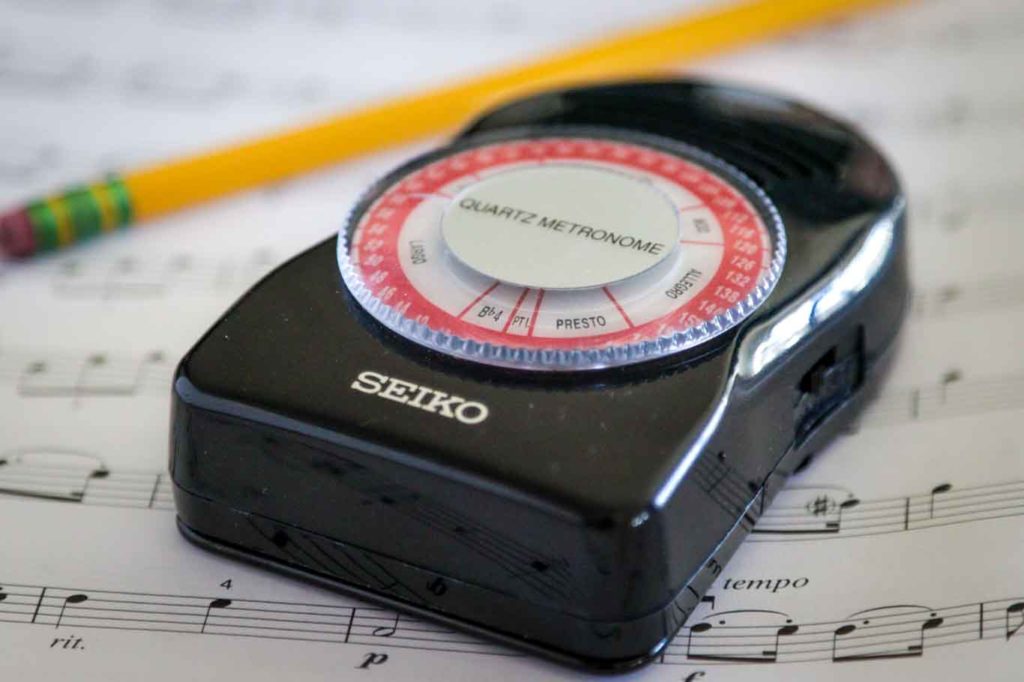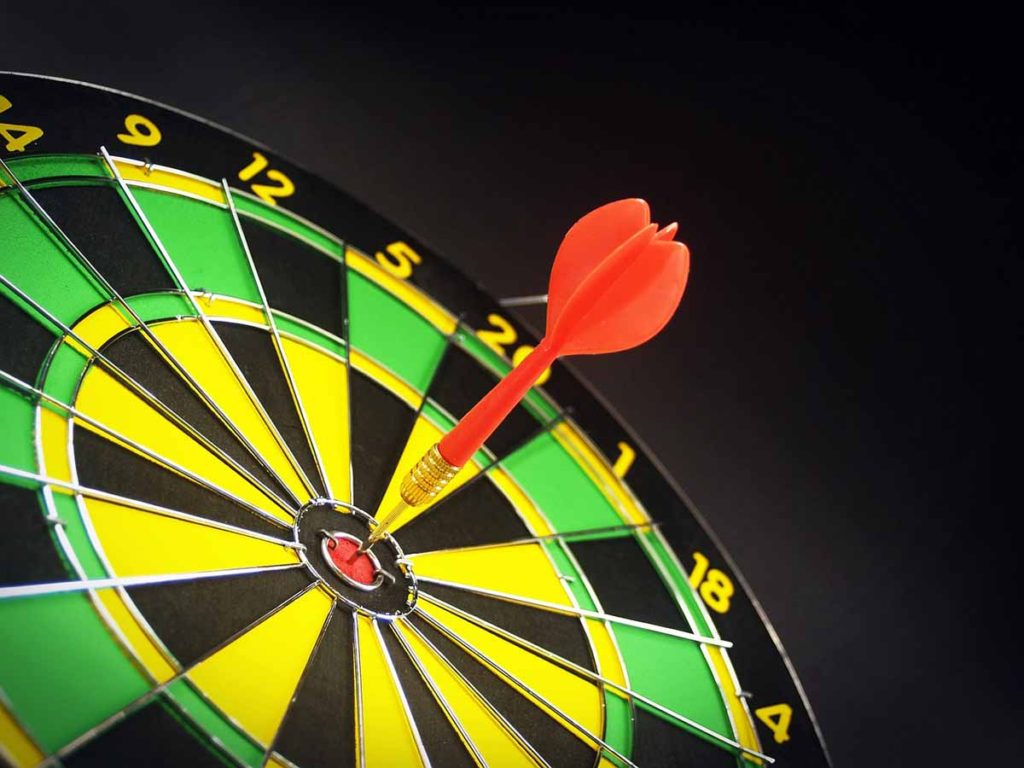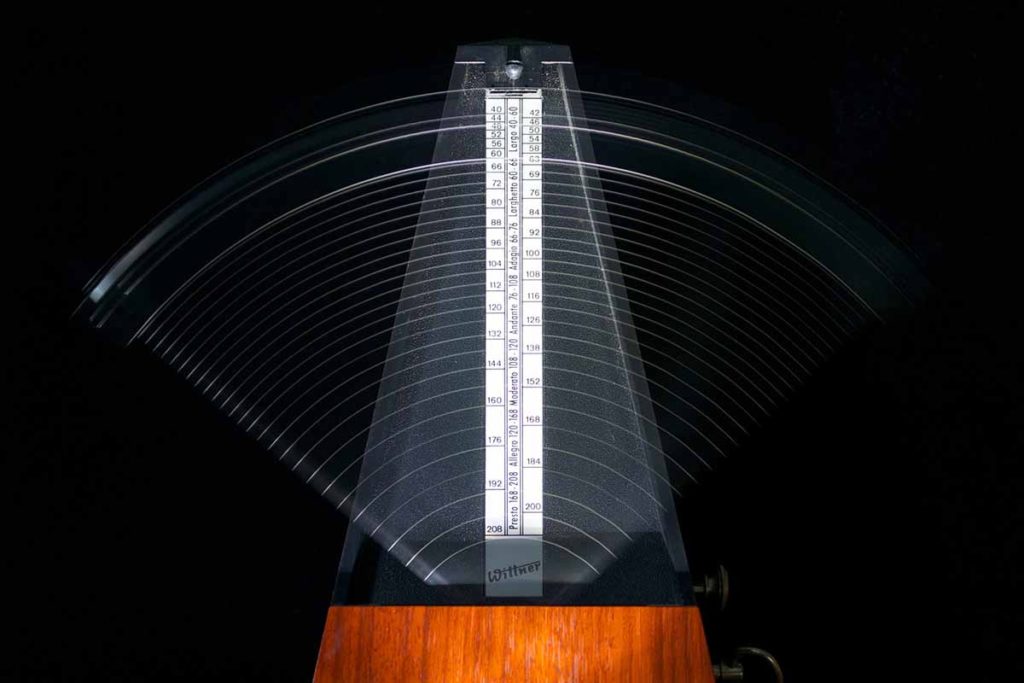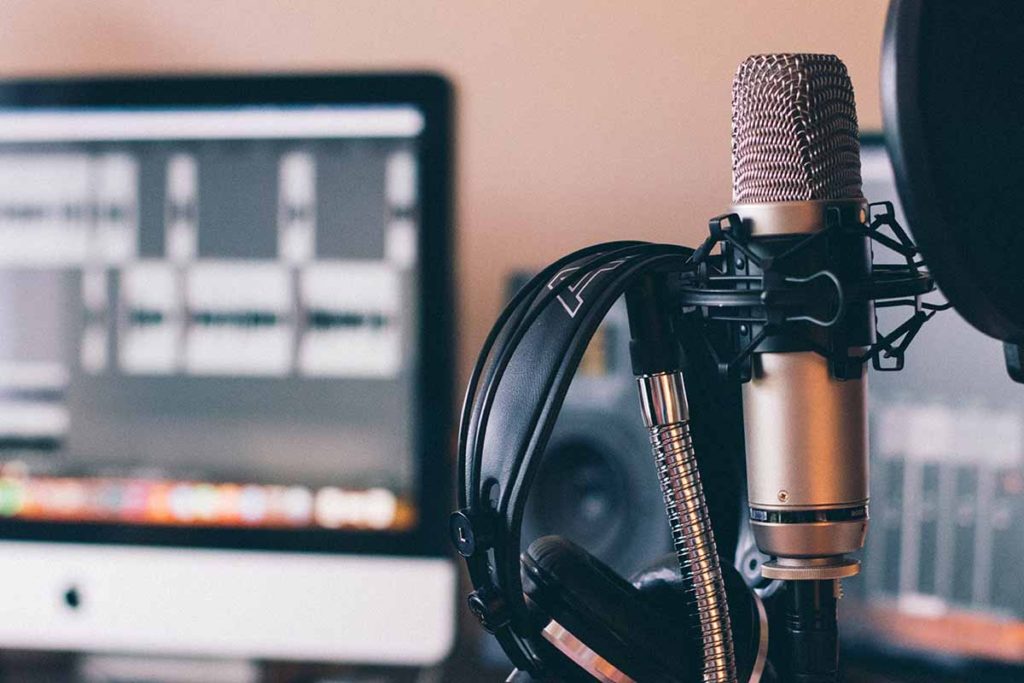
We may receive commissions from purchases made through links in this post, at no additional cost to you.
A while back, your child decided they want to learn a musical instrument. You may not know much about music, but they seemed eager, so you went with it. Their teacher gave you a laundry list of things to get (most of which you’re probably clueless about), and now they want you to get a metronome.
So do you really need to get one? What do you even use a metronome for?
Simply put, a metronome is a device that creates an audible click at regular intervals to establish a steady beat for musical practice. If you want to learn more or need help picking out the right one, check out What is a Metronome and Which One Should You Get (Pros and Cons).
As a college music professor, former band director, and a dad of two beginner musicians, I can definitively say you absolutely need to get your kids a metronome. Here are 9 reasons why.
1. Accuracy of Tempo
One of the challenges of learning an instrument is that the brain is processing a lot of new information at once. Between learning note names, rhythms, and how to physically play an instrument, the brain can only focus on so many things at a time.
Tempo (the speed at which a piece of music is played), should generally stay steady and even. A metronome allows a musician to maintain a steady tempo without having to focus on it; the metronome does the work for them.
With enough repetitions at a steady tempo, the body develops muscle memory and “remembers” how to play at that steady tempo. One of my first music teachers once said, “Practice does not make perfect. Practice makes permanent.” If you practice a steady tempo with a metronome, you make a habit of playing with a steady tempo.

2. Accuracy of Rhythm
Within each beat is a smaller subdivision of beats. Musicians must learn to feel the inner subdivisions of beats and rhythms to accurately play rhythms.
Many metronomes have features with different subdivisions. The metronome will click the desired tempo with one type of click, it can also provide regular smaller rhythms with different-pitched clicks.
Frustrated trying to get your kids to practice? Check out Getting Your Child to Practice Music: 20 Tips for Motivation.
3. Helps you to play without stopping
One of the biggest challenges young musicians have is playing a piece of music without stopping. Sometimes the brain wants to take an extra second to process information before playing the next note. This is the musical equivalent of having a stutter.
Another common tendency for most musicians is to immediately stop when they make a mistake. When we make a musical mistake, we want to immediately stop and play the right note.
One of the challenges of performing music is that it happens in time. Young musicians need to learn to keep playing without stopping, even if they make a mistake. Another favorite saying from a former teacher is, “A right note played at the wrong time is a wrong note.”
A metronome is a constant reminder to keep going. The beat continues and will not stop or slow down for you.
This article is originally from www.dadstuffsite.com
4. Helps you to play faster
One of the best ways to learn to play fast is to start by playing a passage slowly. This allows the musician to process the necessary information at a comfortable pace and develop accurate muscle memory.
A metronome is a tool you can use to help you gradually increase the tempo between repetitions to an almost unlimited degree. With enough repetitions and by gradually increasing the tempo, you will be able to play a passage of music much more accurately and quickly than when you started.

5. Helps you to play slowly
Playing with a good tempo and rhythm at a slow tempo is more challenging than most people realize. When the tempo is slow, it’s easier to make mistakes with an accuracy of rhythm and tempo.
It’s crucial to maintain a good subdivision in your head during both longer and slower notes. A metronome is a great tool because it can provide the necessary subdivision.
Not sure which metronome to get? Check out What is a Metronome and Which One is Best? (Pros and Cons)
6. A more efficient way to practice
One of the best reasons to use a metronome is that it helps you get better, faster. Young musicians tend to focus on notes and rhythms (often ignoring tempo and accuracy of rhythm) and want to play the passage at the final tempo. They want the final product and they want it now.
Young musicians often think playing a passage slowly with a metronome takes too long. The idea that playing through something slowly will help you to play it faster sooner seems counterintuitive.
But you need to remember that to perform a difficult passage of music, you must first develop accurate muscle memory. The metronome gives the musician a more systematic method of developing muscle memory while also correcting accurate rhythm and tempo.
Instead of playing over and over at one tempo, you can increase the tempo so slightly that it’s not perceivable, but actually faster.
This article is originally from www.dadstuffsite.com
7. Helps you to see your progress
When learning any skill, it’s often difficult to see your own progress. Young musicians put in a lot of work to get better. But because they’re the ones doing the work, it’s easy for them to not be aware of the gradual progress they’re making. A metronome is an objective way to see your growth.
If a musician is working on scales with a metronome (which every musician should be doing regularly), they will be able to see their maximum tempo increase. Last week they may have been able to play a passage with a metronome at 110, but this week they can play it at 120.
The difference would most likely go unnoticed by young musicians if they didn’t have a metronome to show them their tempo. The metronome gives you a tangible number to see your progress.
Related: Renting vs Buying a Beginner Instrument: Advice from a Pro

8. Helps with focus
The task of learning a new passage or piece of music can sometimes be daunting. There can often be an inner hesitation to work on a passage. This often leads to getting distracted when they should be practicing.
If you have a child learning an instrument, I’m sure you’ve had some sort of struggle getting them to practice. I know I do with my own kids. In fact, sometimes I struggle to practice when I need to learn something new and challenging.
A metronome gives a gradual, systematic path to follow. Play a given passage at X tempo until there are no mistakes. Then increase the tempo X clicks and do it again. Lather, rinse, repeat. All you need to do is focus on the baby steps and not on the seemingly unachievable final goal.
Related: Parent’s Survival Guide to the Flute: Basic Care, Terms, and How to Help
9. New technology: playing with a click track
Every point we’ve made so far has been a more traditional reason to practice with a metronome. But one of the biggest developments to come out of the last decade or so (and sped up with a pandemic) is the ability to record yourself at home. Recording equipment is getting cheaper and more available for everyone.
Additionally, more and more professional musicians are being expected to record over a click track. And unfortunately, one of the skills even most conservatories don’t prepare music students for is how to record a track in a recording studio.

Regardless of where you sit on the spectrum of recorded music versus live music, the truth is that studio-produced music (whether professionally or in your home) is in our future. If you listen to the soundtrack to any movie (or stream the infinite amount of video content now available online), you can bet the music was recorded in a studio. Different tracks were recorded separately to some degree, if not completely.
As much as some may lament about “back in my day,” the truth is, this generation of kids is growing up with a lot more technology than I ever did. They live in that world. Let’s help them to thrive in that world.
This article is originally from www.dadstuffsite.com
Related Posts
When your child is learning an instrument, at some point their teacher will say they need to have a metronome. If you’re reading this article, chances are you may not know exactly what a metronome...
It’s a typical weekday morning and you are going through your child’s take-home folder. Along with the monthly lunch menu, you find a flyer about signing up for band or orchestra. That’s when...
